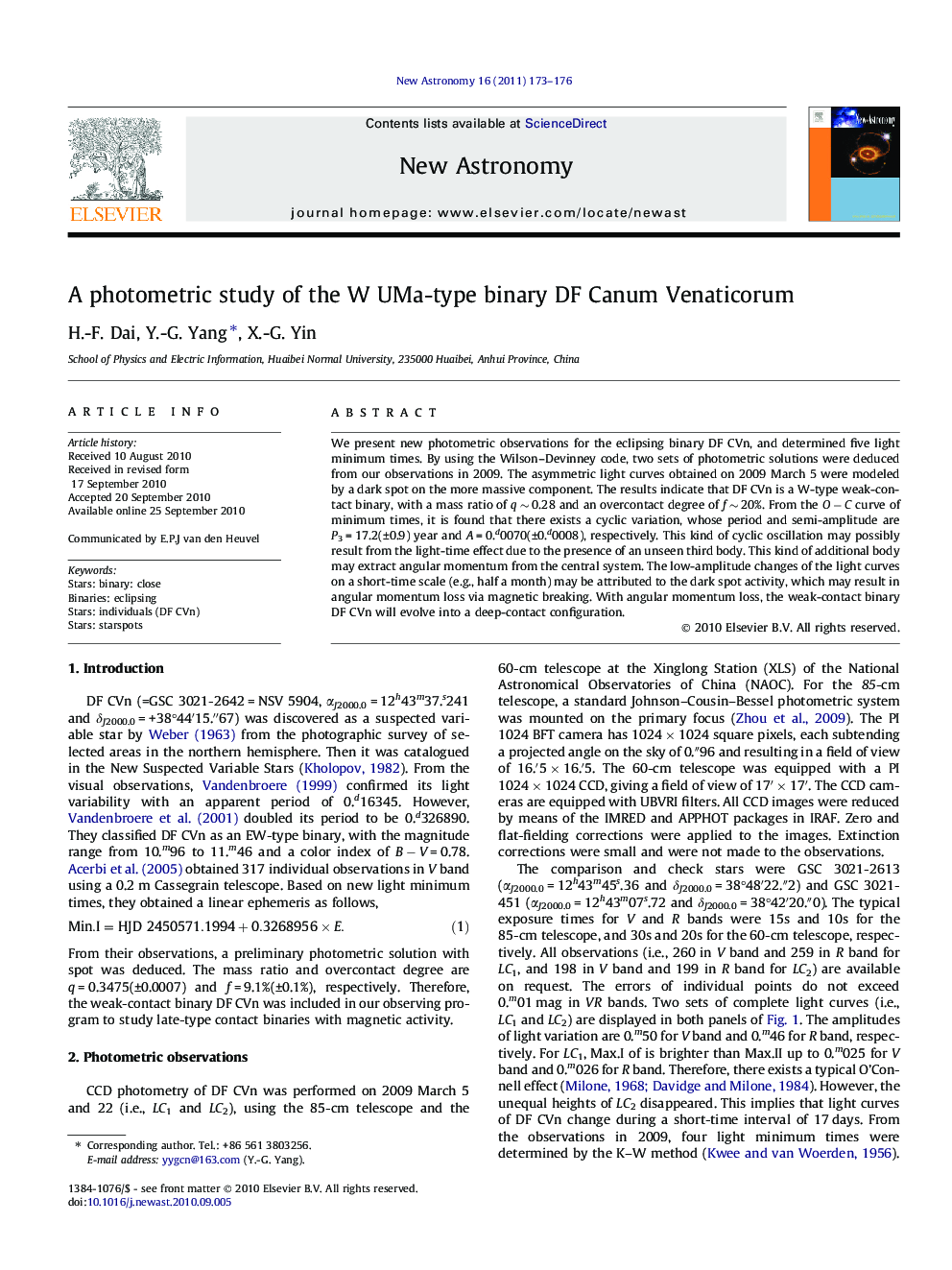| Article ID | Journal | Published Year | Pages | File Type |
|---|---|---|---|---|
| 1779522 | New Astronomy | 2011 | 4 Pages |
We present new photometric observations for the eclipsing binary DF CVn, and determined five light minimum times. By using the Wilson–Devinney code, two sets of photometric solutions were deduced from our observations in 2009. The asymmetric light curves obtained on 2009 March 5 were modeled by a dark spot on the more massive component. The results indicate that DF CVn is a W-type weak-contact binary, with a mass ratio of q ∼ 0.28 and an overcontact degree of f ∼ 20%. From the O − C curve of minimum times, it is found that there exists a cyclic variation, whose period and semi-amplitude are P3 = 17.2(±0.9) year and A = 0.d0070(±0.d0008), respectively. This kind of cyclic oscillation may possibly result from the light-time effect due to the presence of an unseen third body. This kind of additional body may extract angular momentum from the central system. The low-amplitude changes of the light curves on a short-time scale (e.g., half a month) may be attributed to the dark spot activity, which may result in angular momentum loss via magnetic breaking. With angular momentum loss, the weak-contact binary DF CVn will evolve into a deep-contact configuration.
